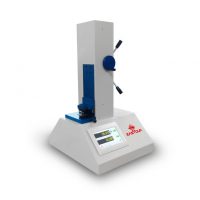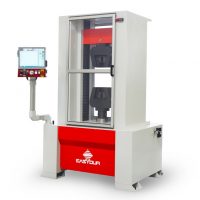The evaluation of the mechanical behavior of a sample under conditions of tension and compression can be performed to provide basic material property data that is critical for component design and service performance assessment.
The requirements for tensile and compression strength values and the methods for testing these properties are specified in various standards for a wide variety of materials.
Testing can be performed on machined material samples or on full-size or scale models of actual components. These tests are typically performed using a universal mechanical testing instrument.
A tensile test is a method for determining the behavior of materials under axial tensile loading. The tests are conducted by fixturing the specimen into the test apparatus and then applying a force to the specimen by separating the testing machine crossheads. The crosshead speed can be varied to control the rate of strain in the test specimen. Data from the test are used to determine tensile strength, yield strength, and modulus of elasticity. Measurement of the specimen dimensions after testing also provides reduction of area and elongation values to characterize the ductility of the material. Tensile tests can be performed on many materials, including metals, plastics, fibers, adhesives, and rubbers. Testing can be performed at subambient and elevated temperatures.
A compression test is a method for determining the behavior of materials under a compressive load. Compression tests are conducted by loading the test specimen between two plates, and then applying a force to the specimen by moving the crossheads together. During the test, the specimen is compressed, and deformation versus the applied load is recorded. The compression test is used to determine elastic limit, proportional limit, yield point, yield strength, and (for some materials) compressive strength.
Showing all 2 results


